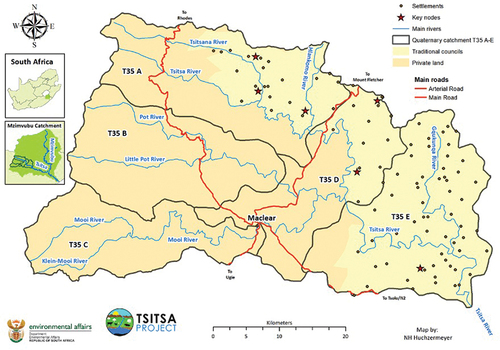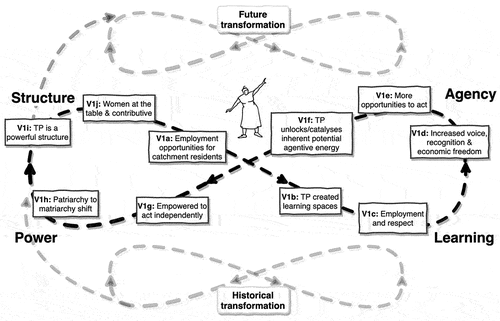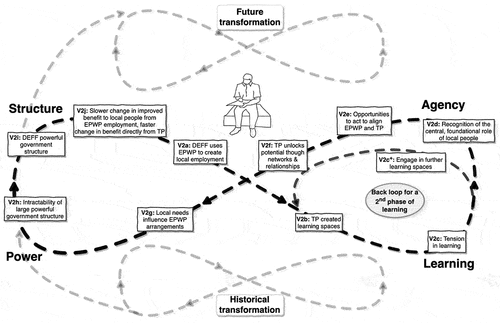Figures & data
Box 1. The research context of this case study (for the full workshop report see Appendix 1).
Figure 1. The Tsitsa river catchment comprising five quaternary catchments (T35A-E) approximately half of which is governed under traditional authorities.

Figure 2. Vignette 1: the transformation story of Ntombi, a local woman employed as a citizen technician on the Tsitsa Project. A series of events relating to the four concepts of transformation (learning, agency, power and structure) have been included as boxes along the transformative cycle. The events are referred to in the text using codes (V1a–j). Shaded lemniscates indicate/acknowledge historical and future cycles of transformation.

Figure 3. Vignette 2: the transformation story of Mark, a senior manager in the Department of Environment Forestry and Fisheries (DEFF) responsible for the operation of the Expanded Public Works Programme (EPWP) in the Tsitsa river catchment. A series of events relating to the four concepts of transformation (learning, agency, power and structure) have been included as boxes along the transformative cycle. The events are referred to in the text using codes (V2a–j). Shaded lemniscates indicate/acknowledge historical and future cycles of transformation.

Table 1. Cross-scale/level analysis of vignette 1: Ntombi. In the analysis, we use the Cash et al. (Citation2006) recognition of levels within scales, as well as multi- and cross-scale interactions, to relate scale to the four social system process elements of structure, learning, agency and power. In each cell, examples at each scale may refer to one of more levels.
Table 2. Cross-scale/level analysis of vignette 2: Mark. In the analysis, we use the Cash et al. (Citation2006) recognition of levels within scales, as well as multi- and cross-scale interactions, to relate scale to the four social system process elements of structure, learning, agency and power. In each cell, examples at each scale may refer to one of more levels.
